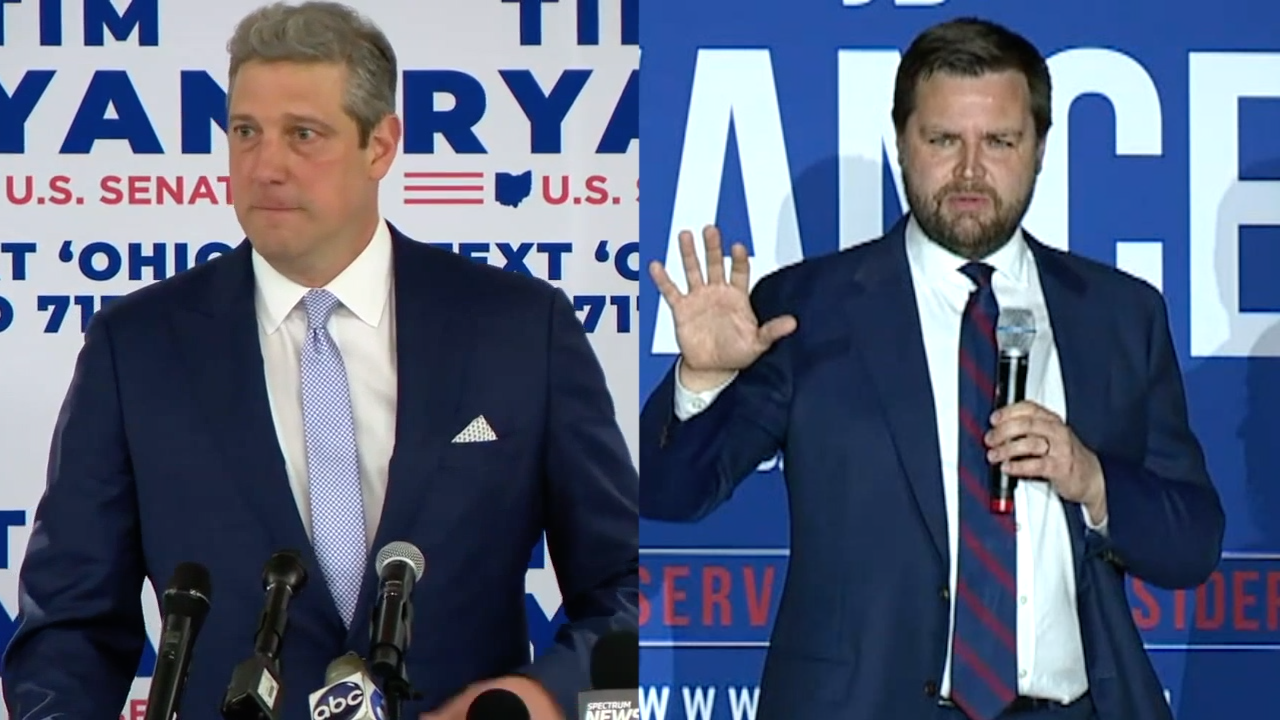COLUMBUS, Ohio — Although Tim Ryan's campaign raised more than $9.1 million in its second quarter of 2022, quadrupling competitor J.D. Vance's, the coveted seat could go either way.
Ohio's race for the open U.S. Senate seat is currently one of the most expensive races in 2022 — raising nearly $74 million so far.
Rep. Ryan, a 10-term Democratic congressman, is outperforming J.D. Vance, a venture capitalist and author of "Hillbilly Elegy," in both raising money and spending it.
Much of Ryan's spending is on TV and digital advertisements, and campaign mailers and events, according to the Federal Elections Commission (FEC) filings.
Republican Vance is at about $2.3 million. He hasn't aired a single advertisement this quarter using his campaign funding.
Around the Ohio Statehouse, Democrats and Republicans alike have all been wondering: where is Vance?
His Twitter doesn't share links to donate or his ads, but rather infrequently uploads his latest contributions to Fox News or Breitbart. Much of the money he is earning in his campaign is going towards research and consulting right now, the FEC filings showed.
On Friday, July 15, Ryan tweeted 11 times about his campaign. Vance tweeted once about Ryan "abusing" House proxy voting while he was on the campaign trail. The Vance for U.S. Senate Press account tweeted three additional times about said abuse.
His team declined to comment on why there is such a stark difference between the two men.
"Data shows that candidates that tend to raise the most money usually win," said Michael Goldberg, economist and professor at Case Western Reserve University. "But there's more to the data than just who raised the most money."
Ryan's donations definitely don't hurt, but Goldberg said Democrat-hopefuls shouldn't celebrate yet.
Catherine Turcer specializes in analyzing campaign finances and said that Goldberg's statement is right – there are three main things to think about in regards to campaigns.
Inside money is how much the candidate is raising and spending. This is what is reflected in Ryan's $9.1 million and Vance's $2.3 million.
Outside money, also called "dark money," is how much corporations are spending on behalf of the candidate. Just because Vance isn't financing his own TV ad doesn't mean that corporations that support him aren't putting one up for him. Vance has strong super-PACs who support him, including Protect Ohio Values.
Protect Ohio Values has already spent millions in this race, with just about $6 million funding Vance the second quarter, according to the FEC. The group has ties to Peter Thiel, a tech billionaire and friend of Vance, who seems to consistently funnel money into the PAC.
Lastly, it is important what the seat looks like.
"The incumbent often raises much more than the challenger," Turcer said. "It's so hot because it's an open seat."
Incumbents typically win, but with Rob Portman not running, the seat is much more competitive, Goldberg added. Since incumbents often win, this could be skewing the data, Turcer said.
Back during the U.S. Senate race in 2018, incumbent Sen. Sherrod Brown won after raising more than $28 million, while Republican challenger Jim Renacci raised about $4.5 million.
RELATED: Congressman Tim Ryan faces off against author J.D. Vance for U.S. Senate seat
An open seat is different: last time there was an open seat in a presidential race, Hillary Clinton raised about $770 million, but lost to former President Donald Trump, who raised about $430 million.
The Ryan campaign said to also look at how they are polling better than Vance, but the Vance campaign said to be skeptical, which Turcer agreed with.
"Both polls and the amount raised, they're just temperature checks that we should not take seriously as voters," Turcer said.
It doesn't matter if they raised $2 million or $9 million, as long as both candidates are getting their names and their message out there, she added.
"There's there's a number of months ahead and a lot of fundraising ahead," Goldberg said. "I think both candidates are going to raise a lot more than they have today."
Vance clearly knows how to raise money outside of the political sphere as a tech mogul, he added, but this could be raising some red flags for Vance's backers. It may even give him that kick forward, he said.
"This sometimes can be an advantage for the candidate that's behind as they're communicating to potential funders to say, 'hey, look, if you care about the Senate flipping to the Republicans and you care about my campaign, look at the at the gap between myself and the Democrat,'" the economist said.
That being said, Vance's team feels confident despite the questions about Vance's whereabouts.
"People try to say, 'Where’s the race in July?' Jai Chabria, a strategist for Vance's campaign, said. "That has never, ever been a barometer of where it’s ended up."
However, Ryan's team slammed Vance on his "inaction" instead.
“Tim is breaking fundraising records left and right, traveling to every corner of the state, and with an average donation of just $37.49, it’s clear he’s building a strong, grassroots base in all 88 counties,” said Tim for Ohio spokesperson Jordan Fuja. “Meanwhile, J.D. Vance is leaning on Big Tech Billionaire Peter Thiel to bankroll his campaign so he can continue to hide from Ohioans in his DC townhouse.”
Follow WEWS statehouse reporter Morgan Trau on Twitter and Facebook.





